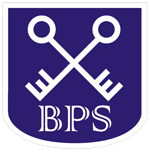Curriculum Rationale
We believe that skills in computing are fundamental to children’s learning and should be incorporated into all areas of the curriculum wherever possible. It is recognised that we have a responsibility to encourage digital literacy in all pupils so support the present and in preparation for their future. New technologies require children to be able to interact fully with computers, laptops, tablets and a growing number of other devices, programs and software in order to fully support their learning in a number of contexts. It is recognised that the level of expectation on children’s capabilities for using new technologies is rising particularly within the new National Curriculum for Computing with its strong emphasis on computer science and computer programming skills which we teach through the Purple Mash scheme.
Intent: We recognise that technology can allow pupils to share their learning in creative ways and provide accessibility opportunities. We are aware that the best prevention for a lot of issues we currently see with technology/social media is through education. Our knowledge rich curriculum is balanced with the opportunity for pupils to apply their knowledge creatively which will in turn help our pupils become skillful computer scientists.
Implementation: We have created a comprehensive curriculum map for staff to follow to best embed and cover every element of the computing curriculum. The knowledge/skills statements build year on year to deepen and challenge our learners
Impact: We encourage our children to enjoy and value the curriculum we deliver. We will constantly ask the WHY behind their learning and not just the HOW. We want learners to discuss, reflect and appreciate the impact computing has on their learning, development and well-being.
At Benington C of E Primary School, we use the Purple Mash scheme which is an engaging programme for children, providing differentiated activities, as well as interactive resources. It is fully aligned with the 2014 National Curriculum for Computing. It supports the teaching and the development of computing and builds computer science capability for current and future learning. To support the pupils’ learning the school and FOBS have purchased new laptops and iPads. Our pupils use these across the curriculum.
The National Curriculum for Computing in Years 1 and 2
Our children will be taught to:
- understand what algorithms are; how they are implemented as programs on digital devices; and that programs execute by following precise and unambiguous instructions
- create and debug simple programs
- use logical reasoning to predict the behaviour of simple programs
- use technology purposefully to create, organise, store, manipulate and retrieve digital content
- recognise common uses of information technology beyond school
- use technology safely and respectfully, keeping personal information private; identify where to go for help and support when they have concerns about material on the internet or other online technologies
The National Curriculum for Computing in Years 3 to 6
Our children will be taught to:
- design, write and debug programs that accomplish specific goals, including controlling or simulating physical systems; solve problems by decomposing them into smaller parts
- use sequence, selection, and repetition in programs; work with variables and various forms of input and output
- use logical reasoning to explain how some simple algorithms work and to detect and correct errors in algorithms and programs
- understand computer networks including the internet; how they can provide multiple services, such as the world-wide web; and the opportunities they offer for communication and collaboration
- use search technologies effectively, appreciate how results are selected and ranked, and be discerning in evaluating digital content
- select, use and combine a variety of software (including internet services) on a range of digital devices to design and create a range of programs, systems and content that accomplish given goals, including collecting, analysing, evaluating and presenting data and information.
- use technology safely, respectfully and responsibly; recognise acceptable/unacceptable behaviour; identify a range of ways to report concerns about content and contact
- Computing progression of skills (577.63KB)
- Essential knowledge (239.71KB)
- Online safety progression (247.66KB)
